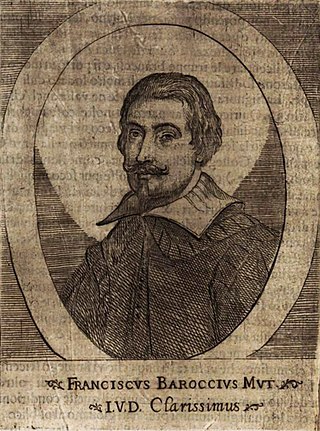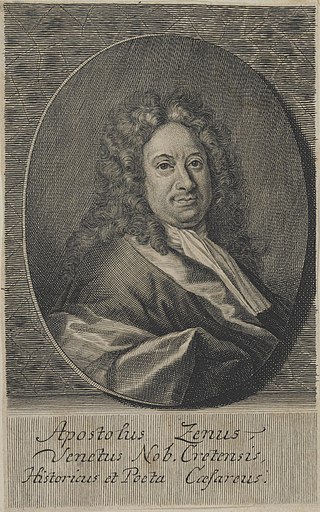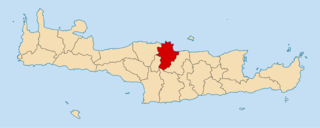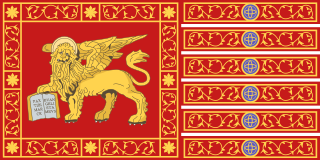
Francesco Basilicata (died c. 1640) was a 17th-century Italian cartographer and military engineer. Basilicata worked in the service of the Republic of Venice and is known for his maps and drawings of the island of Crete.

Francesco Basilicata (died c. 1640) was a 17th-century Italian cartographer and military engineer. Basilicata worked in the service of the Republic of Venice and is known for his maps and drawings of the island of Crete.
Very little is known about Basilicata's life. Gerola has suggested that he might have been from Palermo. Other sources claim that he was from Campania and came to Basilicata to work. When he returned home, he would have taken the surname Basilicata. [1] However, it is certain that Basilicata lived on Crete for several years during the first decades of the 17th century, near the end of the Venetian presence on the island.

Basilicata probably arrived on Crete around 1609, at a time when the island was an overseas colony of the Republic of Venice known as the Kingdom of Candia after its capital, Candia or Chandax (modern Heraklion). During the course of several years and based on his first-hand experience, Basilicata produced three different sets of drawings and maps (dated 1612, 1618–19, and 1629–30). [2] His Atlas, [3] composed around 1618 and today preserved in Museo Correr, is his most famous work.
Basilicata makes skillful use of color to highlight the topography of each region. He meticulously draws every important detail in an aesthetically pleasing manner and often uses vantage points which are unusual and original for the time. In addition to maps, Basilicata also produced several manuscripts concerned mainly with the state of the fortifications of Crete, but also its geography, history, archaeology, administration, and economy.
It has been suggested [4] that Basilicata's 1612 map was copied by Marco Boschini, whose 1651 map entitled The Entire Kingdom of Candia strongly influenced the cartography of Crete in Italy and abroad. However, other authors do not accept this claim and, despite not denying Basilicata's influence on Boschini's map, consider the latter to be the result of collective work by several engineers. [5]

Heraklion or Iraklion ( hih-RAK-lee-ən; is the largest city and the administrative capital of the island of Crete and capital of Heraklion regional unit. It is the fourth largest city in Greece with a population of 211,370 according to the 2011 census. The population of the municipality was 177,064.

The Third Battle of the Dardanelles in the Fifth Ottoman-Venetian War took place on 26 and 27 June 1656 inside the Dardanelles Strait. The battle was a clear victory for Venice and the Knights Hospitaller over the Ottoman Empire, although their commander, Lorenzo Marcello, was killed on the first day.

The siege of Candia was a military conflict in which Ottoman forces besieged the Venetian-ruled capital city of the Kingdom of Candia. Lasting from 1648 to 1669, or a total of 21 years, it is the second-longest siege in history after the siege of Ceuta. It ended with an Ottoman victory, but the effort and cost of the siege contributed to the decline of the Ottoman Empire, especially after the Great Turkish War.

Francesco Barozzi was an Italian mathematician, astronomer and humanist.

Spinalonga is an island located in the Gulf of Elounda in north-eastern Crete, in Lasithi, next to the town of Plaka. The island is further assigned to the area of Kalydon. It is near the Spinalonga peninsula – which often causes confusion as the same name is used for both.

Michele Sanmicheli (1484–1559), was a Venetian architect and urban planner of Mannerist-style, among the greatest of his era. A tireless worker, he was in charge of designing buildings and religious buildings of great value.
The military history of the Republic of Venice started shortly after its founding, spanning a period from the 9th century until the Republic's fall in the 18th century.

The Barbaro family was a patrician family of Venice. They were wealthy and influential and owned large estates in the Veneto above Treviso. Various members were noted as church leaders, diplomats, patrons of the arts, military commanders, philosophers, scholars, and scientists.

Apostolo Zeno was a Venetian poet, librettist, journalist, and man of letters.

Jacopo Tiepolo, also known as Giacomo Tiepolo, was Doge of Venice from 1229 to 1249. He had previously served as the first Venetian Duke of Crete, and two terms as Podestà of Constantinople. During his first term, following the capture and mysterious end of Peter of Courtenay, Tiepolo acted as de facto ruler of the Latin Empire, negotiating treaties on behalf of the Empire with Egypt and the Seljuk Turks.

Marco Boschini (1602–1681) was an Italian painter and engraver of the early Baroque period in Venice.

The Koules or Castello a Mare is a fortress located at the entrance of the old port of Heraklion, Crete, Greece. It was built by the Republic of Venice in the early 16th century, and is still in good condition today.

The Revolt of Saint Titus was a fourteenth-century rebellion against the Republic of Venice in the Venetian colony of Crete. The rebels overthrew the official Venetian authorities and attempted to create an independent state, declaring Crete a republic under the protection of Saint Titus : the "Republic of Saint Titus".

Palaiokastro is a coastal village and a community in the municipal unit of Malevizi. 9 km west of Heraklion on the island of Crete. In 2011 Palaiokastro had a population of 255 for the village and over 1000 of people that have their country house. It is situated in front of a 70 meter long pebbled beach leading to a cove with rapidly deepening waters that are protected from the prevailing northerly winds. On the southern end of the beach rises a steep calcareous rock. During the Venetian occupation of Crete extensive fortifications were built on this rock, housing cannons that secured the bay of Heraklion. Ruins of the fortress walls survive until today.

The Realm or Kingdom of Candia or Duchy of Candia was the official name of Crete during the island's period as an overseas colony of the Republic of Venice, from the initial Venetian conquest in 1205–1212 to its fall to the Ottoman Empire during the Cretan War (1645–1669). The island was at the time and up to the early modern era commonly known as Candia after its capital, Candia or Chandax. In modern Greek historiography, the period is known as the Venetocracy.
The Bailo of Corfu was the leader of the Venetian delegation to the island of Corfu who oversaw the affairs of the island while under Venetian rule and protected the commercial and military interests of the Republic of Venice. The first mention of a bailo in Corfu is in 1386 and is found in a Greek chronicle. The bailo of Corfu is also mentioned in a document by historian Marco Guazzo from 1544.

The House of Tron was a noble family of Venice whose most prominent member, Nicolò Tron, served as the Doge of Venice from 1471 to 1473. Other members of the family served as procurators, senators, generals and ambassadors of the Venetian Republic.

Daniel van den Dyck, known in Italy as Daniel Vandich was a Flemish painter, printmaker, architect and engineer. After training in Antwerp he left for Italy where he first worked in Venice and later became a court painter in Mantua. He was a versatile artist who created mythological and religious scenes, as well as portraits and flower-pieces.

Joseph Goedenhuyze or Goedenhuize was a Flemish botanist and naturalist, active in the court of the Grand Duchy of Tuscany. He was also known by the Italian name Giuseppe Casabona or more rarely Giuseppe Benincasa

Georgios Klontzas also known as George Klontzas and Zorzi Cloza dito Cristianopullo. He was a scholar, painter, and manuscript illuminator. He is one of the most influential artists of the post-Byzantine period. He defined the Cretan Renaissance. He worked for both Catholic and Orthodox patrons. His artistic output included: icons, miniatures, triptychs, and illuminated manuscripts. He is known for occupying his icons with countless figures. The technique is extremely complex and unique to Klontzas. Andreas Pavias attempted this technique in the Crucifixion of Jesus. Klontzas's painting All Creation rejoices in thee is his most popular work. Klontzas influenced Theodore Poulakis he created an extremely similar painting called In Thee Rejoiceth. Klontzas's work is strongly influenced by the Venetian school. His triptychs strongly resemble the works of Gentile da Fabriano, namely the Intercession Altarpiece. Klontzas's Last Judgement resembles Michelangelo's Last Judgement in the Sistine Chapel. There are very close similarities. There is no indication that Klontzas saw the work but it is a possibility. According to the Institute of Neohellenic Research fifty-four items of his art exist today.